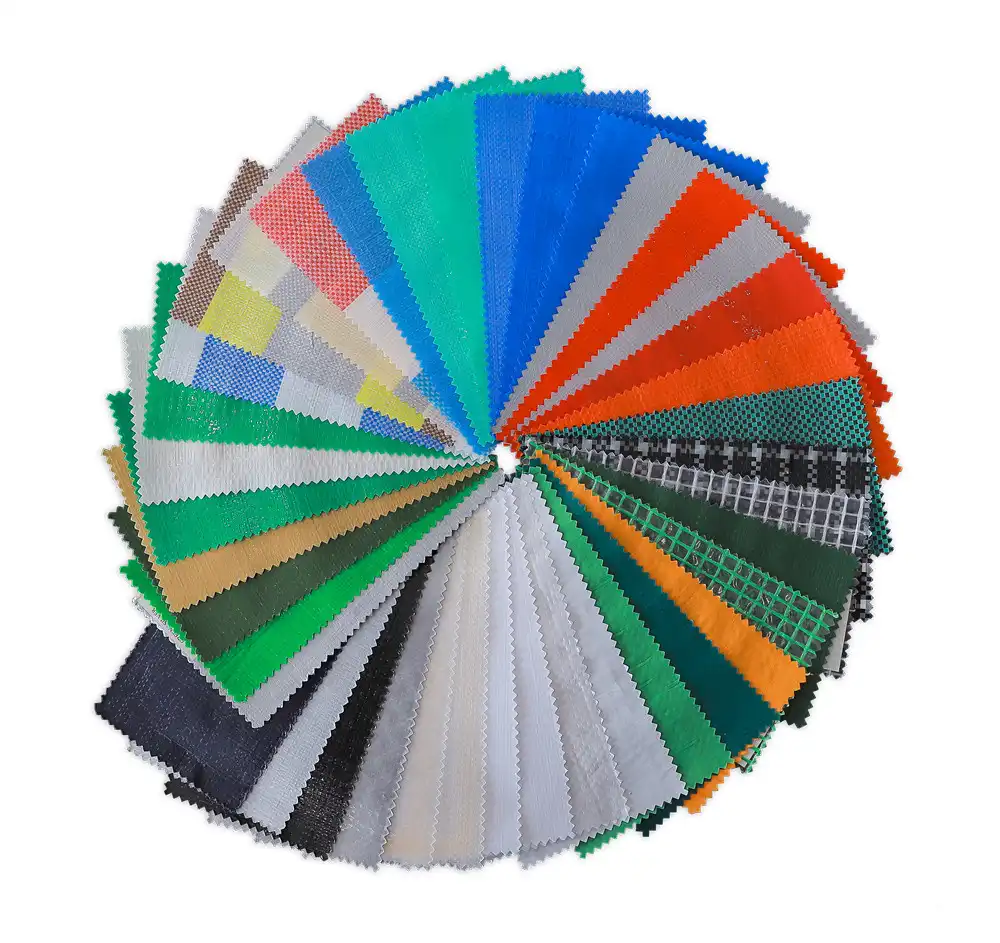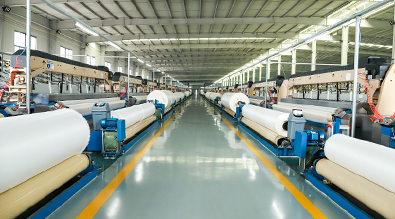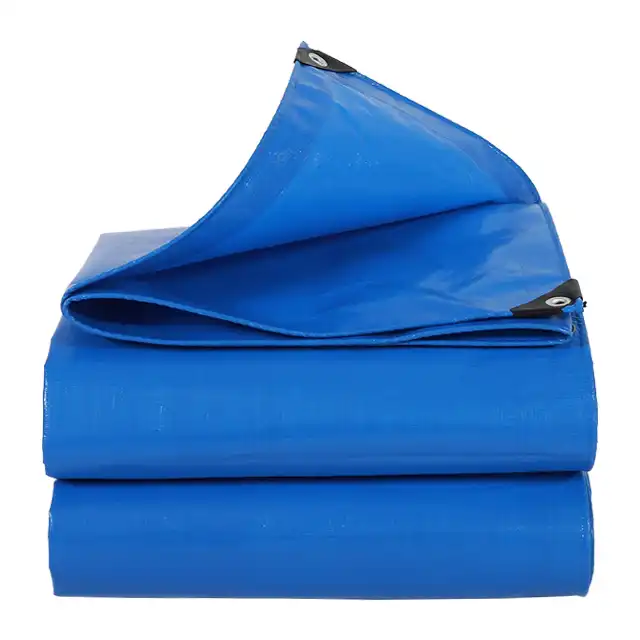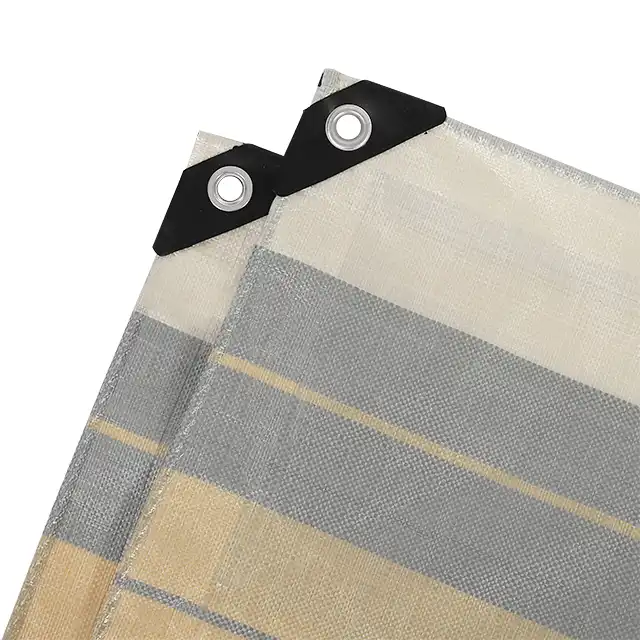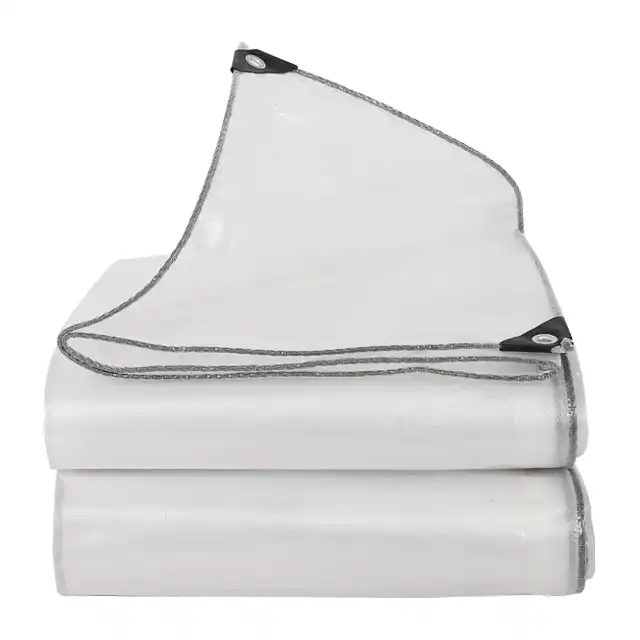How to Cut and Customize Tarpaulin Sheet Rolls?
Customizing Tarpaulin Sheet Rolls requires precision, proper tools, and understanding of material properties to achieve professional results. Whether you need specific dimensions for construction projects, agricultural applications, or industrial purposes, the process involves careful measurement, appropriate cutting techniques, and proper edge finishing. Modern manufacturing capabilities now allow for extensive customization of polyethylene tarpaulin materials, with advanced machinery enabling precise cuts and custom features like reinforced edges, grommets, and specialized coatings to meet diverse application requirements.
Essential Tools and Preparation Methods for Tarpaulin Sheet Rolls Customization
Professional Cutting Equipment Selection
 When working with Tarpaulin Sheet Rolls, selecting the appropriate cutting equipment determines both the quality of your finished product and the efficiency of your customization process. Professional-grade soldering irons with blade attachments offer exceptional precision for smaller projects, creating clean, sealed edges that prevent fraying and maintain structural integrity. Hot knife systems represent the gold standard for industrial applications, combining cutting and sealing operations in a single pass while generating consistent temperatures that ensure uniform edge quality across extended cutting sessions. CNC cutting machines have revolutionized the tarpaulin customization industry, offering unprecedented accuracy and repeatability for complex shapes and large-volume production runs. These computer-controlled systems can execute intricate cutting patterns while maintaining tolerances within millimeters, making them ideal for specialized applications requiring precise dimensions. The integration of CNC technology enables manufacturers to process multiple layers simultaneously, significantly reducing production time while maintaining consistent quality standards across all finished products. Manual cutting tools, including heavy-duty scissors and utility knives, remain essential for field modifications and small-scale customization projects. Professional-grade scissors designed specifically for synthetic materials provide clean cuts without crushing or distorting the tarpaulin fibers. When selecting manual tools, consider blade sharpness, ergonomic design, and durability under repeated use, as these factors directly impact cutting precision and operator fatigue during extended cutting sessions.
When working with Tarpaulin Sheet Rolls, selecting the appropriate cutting equipment determines both the quality of your finished product and the efficiency of your customization process. Professional-grade soldering irons with blade attachments offer exceptional precision for smaller projects, creating clean, sealed edges that prevent fraying and maintain structural integrity. Hot knife systems represent the gold standard for industrial applications, combining cutting and sealing operations in a single pass while generating consistent temperatures that ensure uniform edge quality across extended cutting sessions. CNC cutting machines have revolutionized the tarpaulin customization industry, offering unprecedented accuracy and repeatability for complex shapes and large-volume production runs. These computer-controlled systems can execute intricate cutting patterns while maintaining tolerances within millimeters, making them ideal for specialized applications requiring precise dimensions. The integration of CNC technology enables manufacturers to process multiple layers simultaneously, significantly reducing production time while maintaining consistent quality standards across all finished products. Manual cutting tools, including heavy-duty scissors and utility knives, remain essential for field modifications and small-scale customization projects. Professional-grade scissors designed specifically for synthetic materials provide clean cuts without crushing or distorting the tarpaulin fibers. When selecting manual tools, consider blade sharpness, ergonomic design, and durability under repeated use, as these factors directly impact cutting precision and operator fatigue during extended cutting sessions.
Material Assessment and Preparation Techniques
Understanding the composition and characteristics of your specific Tarpaulin Sheet Rolls is crucial for achieving optimal customization results. High-density polyethylene (HDPE) woven fabrics with low-density polyethylene (LDPE) coatings require different handling techniques compared to standard polyethylene materials. The mesh count, typically ranging from 10x10 to 18x18, affects both cutting behavior and edge finishing requirements, with higher mesh counts generally providing better dimensional stability during the customization process. Temperature considerations play a vital role in tarpaulin preparation and cutting operations. Materials stored in cold environments may become brittle and prone to cracking during cutting, while excessive heat can cause dimensional changes that affect final measurements. Allowing Tarpaulin Sheet Rolls to reach ambient temperature and removing them from storage rolls at least 24 hours before cutting ensures optimal material handling characteristics and reduces the risk of stress-related defects. Surface preparation involves cleaning the cutting area and removing any debris or contaminants that might interfere with cutting operations. Establishing proper support systems, such as cutting tables or roller systems, prevents material sagging and ensures straight, accurate cuts. When working with large rolls, proper material handling equipment becomes essential for maintaining safety and precision throughout the customization process.
Safety Protocols and Workspace Organization
Implementing comprehensive safety protocols protects both personnel and equipment while ensuring consistent quality in Tarpaulin Sheet Rolls customization. Personal protective equipment, including safety glasses, cut-resistant gloves, and appropriate clothing, provides essential protection against sharp tools and hot cutting implements. Proper ventilation systems remove fumes generated during heat-cutting operations, maintaining air quality and worker comfort in enclosed workspaces. Workspace organization directly impacts both safety and efficiency during tarpaulin customization projects. Designated areas for material storage, cutting operations, and finished product handling prevent contamination and damage while streamlining workflow processes. Tool organization systems ensure quick access to required equipment while maintaining blade sharpness and calibration accuracy over extended periods. Emergency procedures should address potential hazards associated with hot cutting tools, electrical equipment, and material handling operations. Fire suppression systems appropriate for synthetic materials, first aid supplies for cutting injuries, and emergency shutdown procedures for powered equipment represent essential safety infrastructure for professional customization operations.
Advanced Cutting Techniques and Edge Finishing Solutions
Heat Sealing and Thermal Cutting Methods
Heat sealing represents the most effective method for creating professional-quality edges on Tarpaulin Sheet Rolls, combining cutting and sealing operations to produce finished edges that resist fraying and moisture penetration. Thermal cutting techniques utilize controlled heat application to melt polyethylene fibers, creating fused edges that maintain material integrity under stress. The optimal temperature range for most PE tarpaulin materials falls between 200-250°C, though specific requirements vary based on material thickness and coating characteristics. Professional heat sealing equipment offers precise temperature control and consistent heating patterns that ensure uniform edge quality across extended cutting operations. Variable temperature settings accommodate different material specifications, while automatic feed systems maintain consistent cutting speeds that optimize edge formation. Advanced systems incorporate cooling zones that solidify molten edges immediately after cutting, preventing distortion and ensuring dimensional accuracy in finished products. Manual heat sealing techniques, using soldering irons or specialized hot knives, provide flexibility for custom applications and field modifications. Proper technique involves maintaining consistent tool temperature, uniform cutting speed, and appropriate pressure application to achieve professional results. Practice on sample materials helps operators develop the skills necessary for clean, consistent cuts while minimizing material waste during the learning process.
Mechanical Finishing and Reinforcement Options
Mechanical finishing techniques offer alternatives to thermal cutting when heat application is impractical or when specific edge characteristics are required. Hemming operations, involving folding material edges and securing them with adhesives or stitching, provide excellent durability for applications requiring frequent handling or exposure to abrasive conditions. Double-fold hems offer superior strength characteristics, though they require additional material allowances during initial cutting operations. Specialized tapes designed for polyethylene materials provide excellent adhesion characteristics for securing hemmed edges and creating weatherproof seals. These tapes typically feature aggressive adhesive formulations that bond effectively with PE surfaces while maintaining flexibility under temperature variations. Proper surface preparation, including cleaning and degreasing, ensures maximum tape adhesion and long-term performance. Reinforcement patches, cut from the same Tarpaulin Sheet Rolls material, strengthen high-stress areas such as corner attachments and grommet locations. Heat welding or adhesive bonding techniques secure these reinforcements while maintaining waterproof characteristics. Strategic placement of reinforcements based on anticipated load patterns significantly extends tarpaulin service life in demanding applications.
Precision Cutting for Complex Shapes and Patterns
Complex shape cutting requires careful planning and template preparation to ensure accuracy and material efficiency. Computer-aided design (CAD) software enables precise pattern development and nesting optimization that minimizes waste while accommodating specific dimensional requirements. Digital templates can be transferred directly to CNC cutting systems or used to create physical cutting guides for manual operations. Template materials must provide dimensional stability and durability for repeated use while offering sufficient flexibility for complex curves and angles. Rigid templates work well for straight-line cutting, while flexible materials accommodate curved cuts and irregular shapes. Template registration systems ensure consistent positioning across multiple cutting operations, maintaining accuracy when producing multiple identical pieces. Quality control measures throughout the cutting process verify dimensional accuracy and edge quality before proceeding to subsequent operations. Regular measurement checks using appropriate measuring tools prevent cumulative errors that could affect final product specifications. Documentation systems track cutting parameters and results, enabling process optimization and quality improvement over time.
Professional Installation and Quality Assurance Practices
Grommet Installation and Hardware Integration
Professional grommet installation transforms raw Tarpaulin Sheet Rolls into functional covers capable of secure attachment and tensioning. Grommet spacing calculations must consider anticipated loads, attachment point locations, and material stretch characteristics under tension. Standard spacing ranges from 12 to 36 inches, depending on application requirements and environmental conditions, with closer spacing providing better load distribution and reduced stress concentrations. Reinforcement techniques for grommet areas prevent tear-out under load while maintaining waterproof characteristics around hardware penetrations. Heat-welded reinforcement patches, typically twice the material thickness, distribute loads over larger areas and significantly improve durability. Proper reinforcement extends beyond the grommet diameter to accommodate stress distribution patterns that develop under various loading conditions. Installation tools and techniques vary based on grommet size and material thickness, with hydraulic presses providing consistent installation pressure for professional results. Die selection affects both installation quality and finished appearance, with sharp, well-maintained dies producing clean cuts and proper grommet seating. Regular tool maintenance, including die sharpening and press calibration, ensures consistent installation quality throughout production runs.
Quality Control and Testing Procedures
Comprehensive quality control procedures ensure that customized Tarpaulin Sheet Rolls meet specified requirements and perform reliably in their intended applications. Visual inspection protocols identify cutting defects, edge quality issues, and dimensional variations that could affect performance or appearance. Standardized inspection criteria provide consistency across multiple operators and production shifts while documenting quality trends over time. Dimensional verification using calibrated measuring equipment confirms that finished products meet specified tolerances and fit requirements. Critical dimensions, including overall size, attachment point locations, and reinforcement placement, require documentation for traceability and quality assurance purposes. Statistical process control techniques identify trends that might indicate equipment wear or process drift requiring corrective action. Performance testing validates that customized tarpaulins meet strength, waterproofing, and durability requirements under simulated service conditions. Tensile testing of edge treatments and reinforcement areas confirms adequate strength margins for intended applications. Water penetration testing verifies seam integrity and overall waterproofing performance, particularly important for applications requiring complete moisture protection.
Documentation and Traceability Systems
Professional customization operations require comprehensive documentation systems that track materials, processes, and quality results throughout production. Material traceability links finished products to specific raw material lots, enabling rapid response to any quality issues that might develop after installation. Process documentation records cutting parameters, equipment settings, and operator information for each production run. Quality records provide historical data for continuous improvement initiatives and customer satisfaction analysis. Photographic documentation of finished products serves multiple purposes, including quality verification, customer approval, and reference for future similar projects. Digital record keeping systems enable rapid retrieval and analysis of production data while reducing physical storage requirements. Customer communication protocols ensure that specifications are clearly understood and documented before beginning customization work. Change management procedures handle specification modifications while maintaining quality standards and delivery schedules. Final inspection and acceptance procedures verify that completed products meet all specified requirements before shipment or installation.
Conclusion
Mastering the art of cutting and customizing Tarpaulin Sheet Rolls requires a combination of proper equipment, technical knowledge, and attention to quality details. From initial material assessment through final inspection, each step in the customization process contributes to the durability and performance of the finished product. Professional results depend on understanding material characteristics, selecting appropriate tools and techniques, and maintaining consistent quality standards throughout production operations.
For businesses and contractors seeking reliable, high-quality Tarpaulin Sheet Rolls and professional customization services, Linyi Shengde Plastic Co., Ltd. stands as a trusted partner with over two decades of manufacturing excellence. As a leading China Tarpaulin Sheet Rolls factory and established China Tarpaulin Sheet Rolls supplier, we combine advanced manufacturing capabilities with extensive customization expertise to deliver solutions that exceed customer expectations. Our position as a premier China Tarpaulin Sheet Rolls manufacturer enables us to offer comprehensive China Tarpaulin Sheet Rolls wholesale programs while maintaining competitive Tarpaulin Sheet Rolls prices.
Whether you require standard products or specialized custom solutions, our High Quality Tarpaulin Sheet Rolls are available for immediate delivery worldwide. We have successfully exported our products to more than 30 countries, building lasting partnerships through reliable quality, competitive pricing, and exceptional service. Our extensive production capabilities, including ultra-wide width options up to 5.1 meters and custom specifications, ensure that we can meet your exact requirements regardless of application complexity. For detailed product information, custom quotes, or technical support, contact our experienced team at info@shengdetarp.com and discover why leading organizations worldwide choose Shengde for their Tarpaulin Sheet Rolls for sale needs.
References
1. Industrial Textiles Association. "Best Practices for Synthetic Fabric Cutting and Finishing." Journal of Technical Textiles, 2023.
2. Thompson, Michael R. "Advanced Heat Sealing Techniques for Polyethylene Materials." Plastics Engineering Handbook, 2024.
3. Chen, Li-Wei and Rodriguez, Carlos M. "Quality Control Methods in Tarpaulin Manufacturing." International Manufacturing Review, 2023.
4. National Safety Council. "Workplace Safety Guidelines for Textile Processing Equipment." Safety Standards Publication, 2024.
